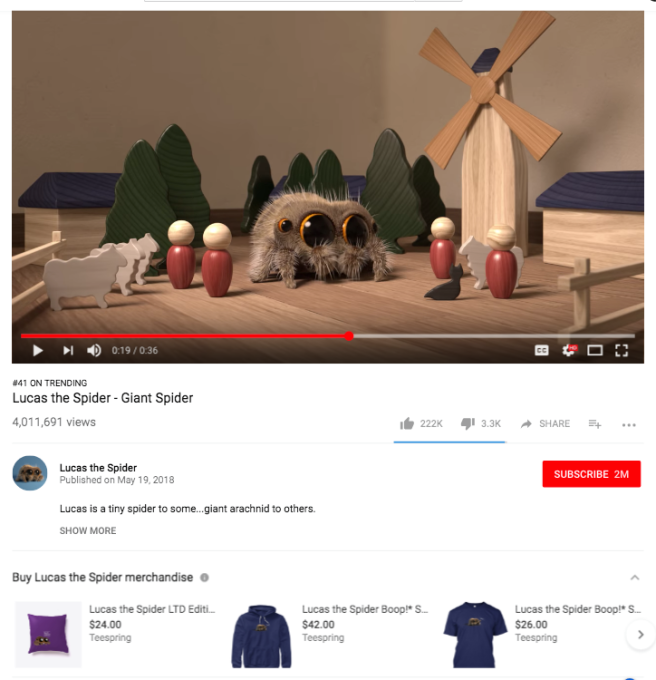SOCIAL
YouTube Tests Product Tags in Selected Creator Videos as Part of Larger Shift Towards eCommerce

In a move that will come as little surprise to most industry watchers, YouTube is working on a new process which will enable creators to tag products displayed in their video clips, eventually leading to more direct shopping options on the video platform.
As reported by Bloomberg:
“[YouTube] recently started asking creators to use YouTube software to tag and track products featured in their clips. […] The goal is to convert YouTube’s bounty of videos into a vast catalog of items that viewers can peruse, click on and buy directly, according to people familiar with the situation. The company is also testing a new integration with Shopify Inc. for selling items through YouTube.”
This is not the first time YouTube has ventured into eCommerce. Back in 2018, YouTube added a merchandise ‘shelf’ for product tie-ins, which enables creators to showcase their branded products beneath their video clips.

YouTube also added ‘merch alerts‘ for live-streams earlier this year as another means to help creators boost awareness of their products, while it also has AR try-on videos for make-up tutorials and other eCommerce related ad tools, which could additionally be used to provide more pathways for creators to generate direct revenue from their content.
But tagging products within the videos themselves could add another level. With this, YouTube would essentially be looking to single out specific items within a video frame, which users could then tap on as the clip is playing in order to get more information about that specific product.
Really, this is what every video platform is now moving towards – TikTok, for example, which is still looking to establish its revenue generation process in order to ensure its creators get paid, began testing tappable product links on its video clips late last year.
eCommerce will be a key element in TikTok’s future expansion. In China, the Chinese version of the app, called ‘Douyin’, has seen significant monetization success via eCommerce integrations in the app.

Douyin generated over $122 million in revenue last year, mostly generated by eCommerce, which is more than 2x what TikTok brought in. That’s a pretty clear indicator of where TikTok will be looking to evolve, and with Walmart seeking to buy into the platform, with an eye to expanding its eCommerce ambitions, it seems evident that the next stage of broader video monetization will focus on in-stream buying, and providing means for viewers to shop for the items displayed in these clips.
Instagram, too, has flagged its intention to include shopping options in Reels videos soon.
Given this, it’s little surprise to see YouTube also looking to advance in this respect – though from the sounds of it, YouTube’s initiative will go a little further than simply including a shopping button overlaid onto the video playback.
As Bloomberg notes, YouTube’s process will ‘tag and track’ products within video clips. That could lead to a new, habitual process, where users become accustomed to being able to simply tap on any product they see in a clip for more information.
How, exactly, this will work in practice is unclear, but it does seem like YouTube is taking a more advanced approach to video eCommerce, which could be a significant evolution of note. That will provide more revenue generation options for creators, who’ll be able to include more items in their clips, and new advertising opportunities for brands, tagging onto popular YouTubers to help showcase their products.
It could be a major development – we’ll have to wait for more details, but definitely, integrated product listings within videos, in general, is set to become a major focus moving forward.
